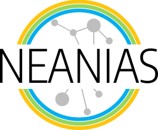Venice & Online, 15-20/05/2022.
NEANIAS Underwater services were presented at GeoHab (Marine Geological and Biological Habitat Mapping) on May 19, 2022.
GeoHab is an international association of marine scientists studying biophysical (i.e., geologic and oceanographic) indicators of benthic habitats and ecosystems as proxies for biological communities and species diversity.

The main goals of GeoHab scientists are:
- to support government spatial marine planning, sustainable ocean management, and decision making.
- to support and underpin the design of marine protected areas (MPAs).
- to conduct scientific research programs aimed at generating knowledge of benthic ecosystems and seafloor geology.
- to conduct living and non-living seabed resource assessments for economic and management purposes, including the design of fishing reserves.
Within the EC H2020 NEANIAS project three cloud-based underwater services are offered, emphasising the importance of seafloor, habitat, and underwater cultural heritage mapping. While targeting various end-users, from interested laymen to dedicated students, scientists or ambitious engineers, the services provide user-friendly solutions addressing bathymetric post-processing, seafloor mosaicking and classification.
The Bathymetry mapping (UW-BAT) service provides a cloud-based edition of the well-known MB-System open-source software package within a JupyterLab environment. The service generates bathymetric grids and maps throughout a flexible and expedient workflow, by implementing sound speed corrections, applying tides and filters, and selecting the required spatial resolution. An implemented VNC desktop allows the use of X11-based graphical user interfaces for manual editing.
The Seafloor Mosaicking from Optical Data (UW-MOS) service provides a solution for representing a large area of the seafloor, in the order of tens of thousands of images, and tackling visibility limitations from the water column. The service performs several steps like camera calibration, image undistortion, enhancement, and quality control. The final product could be a 2D image Mosaic or a 3D model.
The Seabed Classification from Multispectral, Multibeam Data (UW-MM) service focuses on seabed classification by implementing cutting-edge machine learning techniques and at the same time providing a user-friendly framework. The service unfolds within four steps: uploading the data, selecting the desired seabed classes, producing the classification map, and downloading the results.
Therefore, NEANIAS Underwater services exploit cutting-edge technologies providing highly accurate results, regardless of the level of expertise of the end-user, and reducing the time and cost of the processing. Moreover, the accessibility to sophisticated services can simplify and promote the correlation of interdisciplinary data towards the comprehension of the oceans, and the contribution of these innovative services is expected to be of high value to the marine community.
NEANIAS was represented by P. Wintersteller1, K. Karantzalos2,6, J. Quintana3, P. Nomikou4, R. Neville1, K. Baika5, D. Lampridou2, and NEANIAS team members7
- Teledyne Marine, Teledyne GmbH, Germany (This email address is being protected from spambots. You need JavaScript enabled to view it.)
- National Technical University of Athens (NTUA), Greece
- Coronis Computing, Spain
- National and Kapodistrian University of Athens (NKUA), Greece
- Aix-Marseille Universite (CNRS), France
- Athena Research Center, Greece
- NEANIAS project.
Get more details about the NEANIAS presentation or the event.
